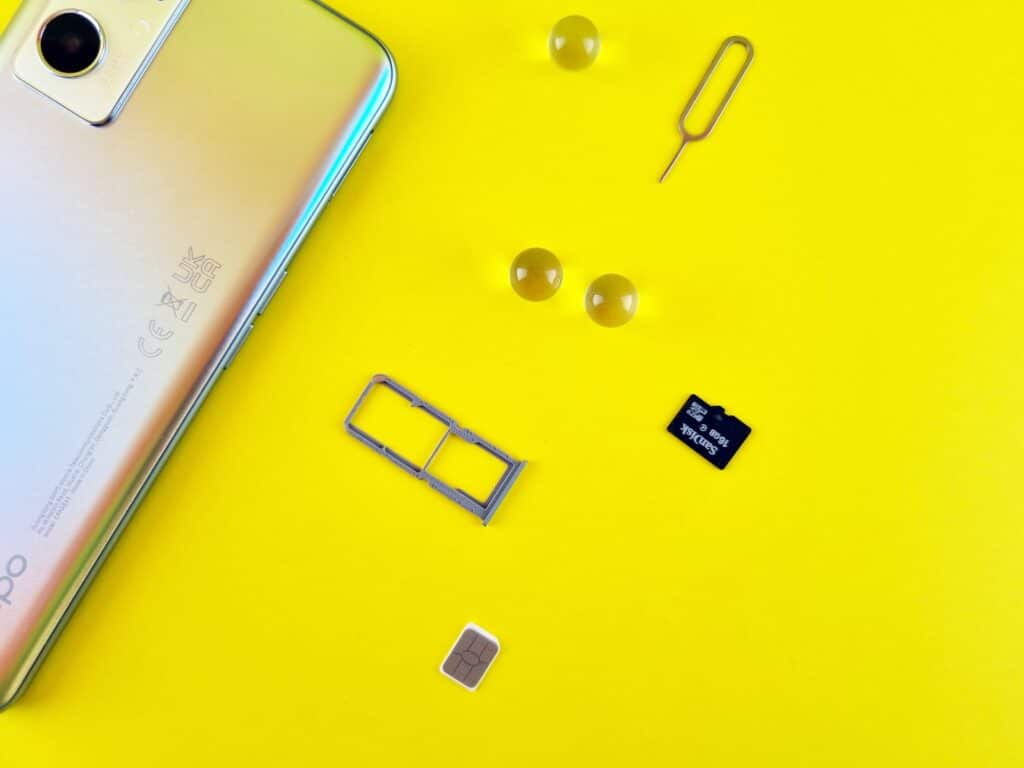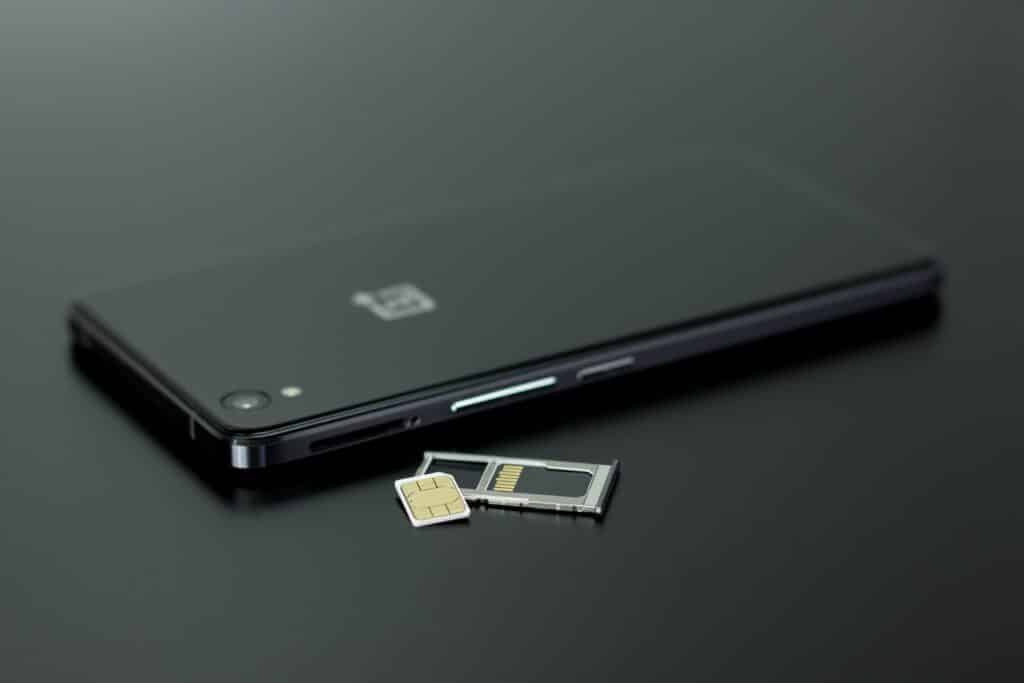
International SIM cards convert your smartphone to a phone capable of reaching worldwide networks, rather than just local networks in your home country, so you can make the phone calls you need to.
Staying connected while traveling is crucial, whether you’re talking to family members or dealing with business communications.
Our team here at Remitly created this guide to help you learn all about international SIM cards and how they work.
Understanding international SIM cards
You can buy a local SIM card based on your location, but it can be difficult to purchase different cards whenever you arrive somewhere new. These “local” cards may be programmed to work on just one network in your specific geographical location.
International SIM cards work worldwide, making them more versatile and flexible for different geographical locations.
Using a SIM card for international travel eliminates the need to pay expensive roaming charges. These mobile data and phone charges are costly and can add up quickly, especially if you regularly make international calls.
Different types of international SIM cards
Prepaid vs. postpaid options
The two most common types of international SIM cards include prepaid SIM cards and postpaid SIM cards. An international prepaid SIM card lets you pay for the desired amount of talk time, data, and text messages upfront. This gives you complete control over how much you spend, but you’ll need to top up the card if your prepaid balance runs out.
A postpaid travel SIM card works on a monthly billing cycle. You’re billed for the services you use at the end of every month. These cards typically have higher allowances, and you won’t need to worry about topping up your balance if it gets low.
You can find a data-only SIM card, but this type of SIM card won’t allow you to make international calls or texts without roaming charges.
A data-only international SIM card is also called a data SIM card and is exactly what it sounds like—it’s for data only. It can be extremely helpful for messaging apps like Facebook Messenger, WhatsApp, and more.
Roaming SIM cards vs. local SIM cards
If your phone has a roaming SIM card, it works with other networks that allow you to make an international call to multiple countries. However, when you use these cards, you’ll receive roaming charges from your cell phone provider, which can become quite expensive.
Local SIM cards are physical cards you can purchase. These cards assign your phone to a local telephone number, so every call you make is considered local without additional fees. They work well temporarily when you need to use your phone while traveling abroad but aren’t usually a good permanent solution for long-term use.
Compatibility and coverage
On a GSM mobile network, you can swap your global SIM card and use it anywhere in the world. It’s a good option for frequent international travelers, and you can switch devices simply by porting your card over. Make sure you have unlimited data to help you avoid overage charges.
CDMA networks don’t require SIM cards since the phone is linked to a specific network. These cards have a unique ID number that identifies the user. Switching within a CDMA network is more difficult if you need to change networks.
Before you look into buying the cheapest international SIM card, confirm which network your phone is compatible with. You can change the card to whatever you need if it’s a GSM network.
Confirming your phone service provider has global coverage is also a good idea. Some networks also partner to make international calling easier and more affordable. Look for plans that include data bundles and free incoming calls to help you save even more.
How international SIM cards work
Activation process
You may purchase a physical SIM card online, at many major airports, or directly from your phone service provider. Once you buy the SIM card, you’ll need to register and activate it on the network.
After you buy and activate the card, turn your phone off. Remove the current SIM card, replace it with your international SIM card, and turn the phone back on. It should connect to your network automatically—if not, your provider can help you activate it correctly so you can use your phone internationally.
Loading credit or data
A prepaid international SIM card can be pre-loaded with your chosen amount to cover the cost of calls, texts, and data use. Check your balance regularly and add more money if you’re running low so you never miss an important call or text message.
Making and receiving calls
Use the appropriate country code to make and receive an international call. This phone number prefix is usually a few digits long and identifies the specific region, country, or geographic area you need to reach so you can dial out.
You should be able to receive calls with an international SIM card as long as the other party has the correct phone number. Some networks may limit the use of data and text internationally, so it’s best to confirm with your carrier before you travel or purchase a SIM card.

Advantages of using an international SIM card
Cost savings
Using a SIM card helps you avoid expensive roaming charges that you’d typically receive from your provider. These cards provide much more competitive rates when making international phone calls and using data via different networks across the globe.
Convenience and flexibility
The best international SIM cards allow you to stay connected to friends, family, and other important people or businesses without changing your phone number. They provide you with the ease and flexibility to choose your plan based on the duration of your travel and the location.
Local phone number
If you plan to be in a new country for an extended period, you can obtain a local phone number for your destination country. This makes it easier for others to identify you based on location. You’ll also avoid the expensive costs of making and receiving traditional international calls.
Where to purchase international SIM cards
Mobile carriers
Most major mobile data and phone carriers sell international SIM cards directly to their customers. Check with your home carrier to find out which options are available. You can also purchase these cards from major mobile carriers online or at a carrier’s retail location.
Online retailers and travel agencies
Many online retailers sell a variety of SIM cards, as do some travel agencies. These third-party options make purchasing the correct SIM card easy based on your specific network and travel destination. Some popular online platforms include OneSIMCard, KnowRoaming, and KeepGo.
Airport kiosks and local stores
If you’d rather wait to buy physical SIM cards later, you can purchase one at an airport kiosk when you arrive at your destination.
Always confirm that the card is compatible with your phone’s make and model and the local network. It’s also important to look at the international call rates attached to the card to find the most affordable and competitive option.
Tips for using international SIM cards
Here are some helpful tips for using international SIM cards when you travel:
- Research and compare different data plans and data packages and compare the rates, data plan allowances, and validity periods.
- Ensure your phone is unlocked and available for international SIM use. You may need to contact your carrier directly to help unlock your phone. Using an unlocked phone makes connecting easier.
- Monitor your data and call usage to help you avoid unexpected charges.
- Utilize Wi-Fi whenever possible, which will help you save money.

Potential challenges and solutions
Network compatibility issues
If you run into an issue using your international data SIM card, start by confirming that you’re connected to the network. You may need to troubleshoot any network connectivity problems by rebooting your phone, resetting the network settings, or ensuring you have the correct network password.
Contact your carrier’s technical support team for help if all else fails.
Expiry and validity periods
If you don’t use your international SIM card for a certain period, it may expire. Some inactive cards expire after anywhere from 90 to 180 days. Check to confirm that you can renew your SIM card and maintain continuous connectivity to keep it active and working.
Security concerns
It’s vital to safeguard your personal and financial information when using international SIM cards. Never share your phone or network password; change it often to prevent hacking. Always use a secure connection, and be especially cautious when using public Wi-Fi networks.
Conclusion
If you need to make a phone call and you’re traveling to a foreign country, an international SIM card helps you avoid excess international roaming fees. This tiny card is added to your smartphone and enables you to connect to various countries and their networks all over the globe.
Whether you’re planning to move to a new country or preparing to travel abroad, an international SIM card makes using your phone easy.
Remember to confirm your phone carrier’s rules regarding international data and call usage, understand the SIM card’s validity periods, and know what network your phone uses. Then, you can find the best international SIM card for you.